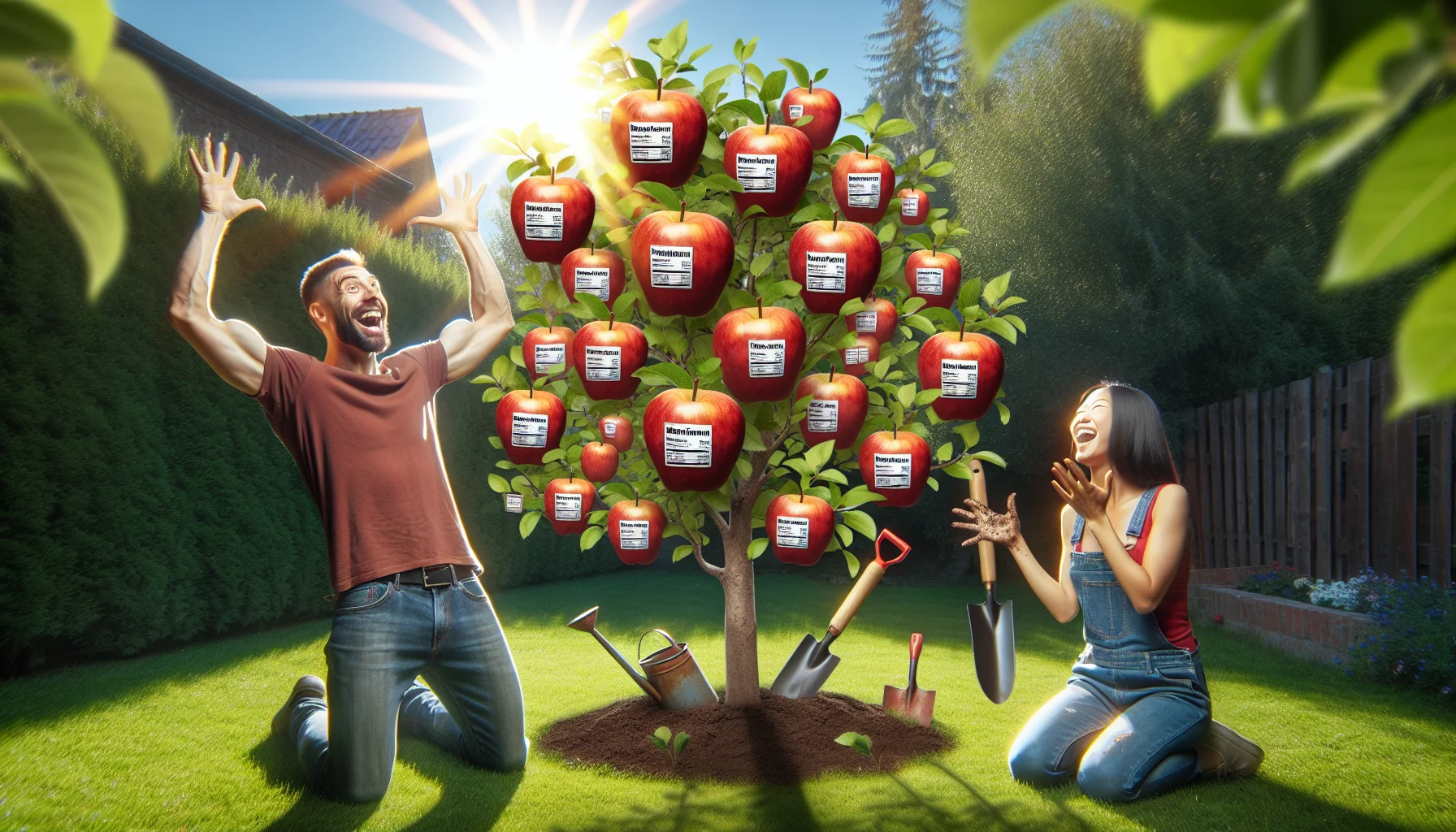Red apple nutrition Quiz
Test Your Knowledge
Question of
The Nutritional Value of Red Apples
Red apples are not only delicious but also packed with a variety of nutritional benefits that can contribute significantly to a healthy diet. They are a good source of dietary fiber, which helps in digestion and maintaining a healthy weight. Additionally, red apples contain vitamins such as Vitamin C, which is essential for the immune system, and various antioxidants that protect the body from free radicals. They are also low in calories, making them a perfect snack for those monitoring their calorie intake. Consuming red apples regularly can also help in reducing the risk of several chronic diseases, including heart disease, diabetes, and cancer, thanks to their nutrient-rich profile and anti-inflammatory properties.
How Red Apples Fit into Your Garden
Integrating red apples into your garden not only enhances its aesthetic appeal but also contributes significantly to a healthy lifestyle. These vibrant fruits are packed with essential nutrients, including fiber, vitamins, and antioxidants, which are crucial for maintaining good health. Growing red apples at home ensures you have a fresh, chemical-free supply right at your doorstep, encouraging a more natural and sustainable way of living. Moreover, the process of tending to apple trees can be a therapeutic activity, promoting mental well-being. By choosing to grow red apples, you're not just cultivating fruits; you're investing in the health and beauty of your garden and your family.
Cultivating Red Apples: A Guide
- Choosing the Right Variety: Research and select a red apple variety that is suitable for your climate and soil type.
- Planting: Plant your apple trees during the dormant season, ideally in late winter or early spring. Ensure the planting location gets full sunlight and has well-draining soil.
- Watering: Water your apple trees regularly, especially during their first growing season to help establish roots. Avoid over-watering to prevent root rot.
- Fertilizing: Apply a balanced fertilizer in early spring before new growth begins. Follow up with additional feedings as recommended for your specific apple variety.
- Pruning: Prune your apple trees annually during late winter to remove dead or overcrowded branches and to promote healthy growth and fruit production.
- Pest and Disease Management: Monitor for signs of pests and diseases. Use organic or recommended treatments to manage any issues promptly to avoid damage to the trees.
- Thinning: Thin the fruits in early summer to ensure the remaining apples grow to a desirable size and quality. Leave only the largest and healthiest fruits on each branch.
- Harvesting: Harvest your red apples when they are fully ripe, which is typically in late summer to fall, depending on the variety. Test for ripeness by checking the color and firmness, and by tasting.
Pest Management for Healthy Red Apples
Red apple trees are susceptible to a variety of pests, including codling moths, apple maggots, and aphids. These pests can cause significant damage to the fruit and overall health of the tree. Organic methods to protect red apple trees involve integrated pest management strategies. This includes introducing natural predators like ladybugs and lacewings to control aphid populations. For codling moths and apple maggots, hanging pheromone traps in the trees can significantly reduce their numbers by interrupting mating patterns. Additionally, maintaining a clean environment by removing fallen fruits and pruning the trees can help minimize the habitat for these pests. Using kaolin clay as a protective film on the apples can also deter pests without harming the tree or the environment.
Watering and Fertilizing Your Red Apple Trees
To ensure your red apple trees thrive and produce a nutritious yield, it's crucial to follow best practices for watering and fertilizing. For watering, young trees require consistent moisture, so aim to water deeply once a week, allowing the water to penetrate 6 to 12 inches into the soil. Avoid over-watering as this can lead to root rot. As trees mature, they may need less frequent watering, but during dry spells, it's important to maintain a regular watering schedule.
Fertilizing should be approached with care to avoid over-fertilization, which can harm your trees. Use a balanced fertilizer in early spring before new growth begins. A slow-release formula is ideal for providing steady nutrients without overwhelming the tree. Additionally, incorporating organic matter into the soil can improve its health and fertility, benefiting your apple trees in the long run. Remember, soil testing can be invaluable in determining the exact needs of your trees, ensuring you provide the right nutrients in the right amounts.
The Best Time to Harvest Red Apples
Knowing the right time to harvest red apples is crucial for enjoying them at their peak of flavor and nutritional value. Typically, red apples are ready to be picked from late summer through early fall, depending on the variety and your local climate. To determine if an apple is ripe, look for a deep, rich color and no green around the stem. Gently lift the apple upwards in the palm of your hand, and if it comes off easily, it's ready to be harvested. Additionally, the fruit should be firm to the touch and have a sweet, fragrant aroma. Eating red apples at their peak ripeness not only provides the best taste but also maximizes their health benefits. Red apples are a great source of dietary fiber, vitamin C, and various antioxidants. These nutrients can help support heart health, promote digestive wellness, and may even reduce the risk of certain chronic diseases when included as part of a balanced diet. So, picking your red apples at the right time ensures you get the most out of this delicious and nutritious fruit.
Red Apple Nutrition: A Summary
| Nutrient | Amount per 100g |
|---|---|
| Calories | 52 |
| Water | 86% |
| Protein | 0.3g |
| Carbohydrates | 13.8g |
| Sugar | 10.4g |
| Fiber | 2.4g |
| Fat | 0.2g |
| Vitamin C | 4.6mg |
| Potassium | 107mg |












